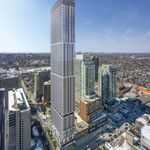Who would have thought that one of the best Bus Rapid Transit (BRT) systems in the U.S. would be in its most crowded, congested, sprawling city? Well check this out. It's really fabulous.
In October 2005, the Los Angeles County Metro Authority (or Metro) debuted a new 14-mile BRT system in the San Fernando Valley using a former rail right-of-way. Unlike many "rapid" bus transit systems in the U.S., the Orange Line is true BRT - it features a dedicated-roadway that cars may not enter, has pre-boarding payment so buses load quickly and efficiently, and uses handsome, articulated buses to transport passengers fast - sometimes at speeds approaching 55 mph! The roadway is landscaped so ornately you could almost call it a bus greenway.
But that's not all. The corridor also boasts a world class bike & pedestrian path which runs adjacent to the BRT for nearly its entire length, giving users numerous multi-modal options. Each station includes bike amenities, including bike lockers and racks, and all the buses feature racks on the front that accommodate up to three bikes.
Perhaps the biggest problem is it's soaring success: ridership numbers have some calling for the BRT to be converted to rail and Metro is exploring ways to move more passengers including buying longer buses. Plus: expansion plans are also underway. But whatever way your slice it, this is truly a hit with Angelenos, a formerly 81 minute trip now takes 44-52 minutes. That's over an hour round trip savings, and that makes a bonafide impact in the lives of people.





